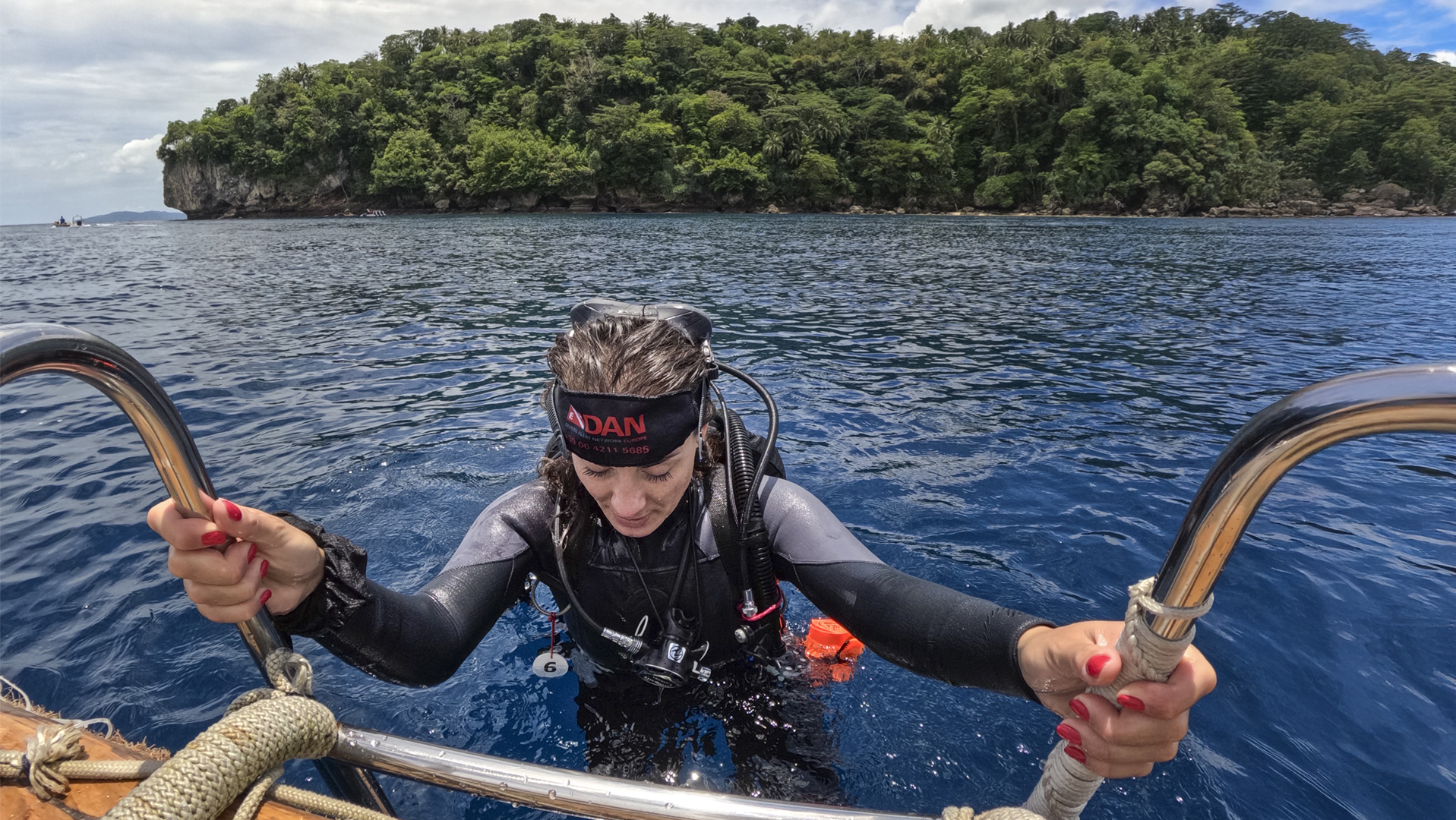as the saying goes. In diving, understanding risks is crucial for safety. While many divers are aware of common hazards, there are others that are less well-known or often overlooked. The 8 Hidden Hazards campaign aims to shed light on these risks, helping divers to better prepare and enjoy safer, more informed diving experiences.

Immersion Pulmonary Edema (IPO/IPE) is a lesser known but potentially dangerous diving condition. Misunderstanding it can have life-threatening consequences for both the diver and the buddy.
Diving and swimming increase the workload on the heart and lungs due to water pressure. Constricted blood vessels can exacerbate the blood pressure and cause plasma to leak into the alveoli, impairing gas exchange and causing hypoxia.
Divers may feel breathless, confused, and have difficulty functioning due to low oxygen pressure. These symptoms can worsen during ascent, leading to unconsciousness and even cardiac arrest. Heart problems or high blood pressure increase the risk, but also cold water, stress, and exertion can increase blood pressure, which can lead to problems even in the healthy diver. Hydration is important to reduce the risk on DCI, but excessive intake should be avoided as this can lead to an increased IPO risk.
Divers may confuse breathlessness or difficulty inhaling with regulator problems or running out of air. This can lead to ineffective buddy responses. Trying to reassure the diver and keep him submerged will make the situation worse, as the problem is elsewhere, not with the equipment or gas supply.
The key is to assist the diver in ascending to the surface and getting them out of the water as quickly as possible. This will reverse the effects of hydrostatic pressure on the body mentioned above. Keep the diver warm to reverse the effects of vasoconstriction and immediately activate EMS for further treatment.For more info:
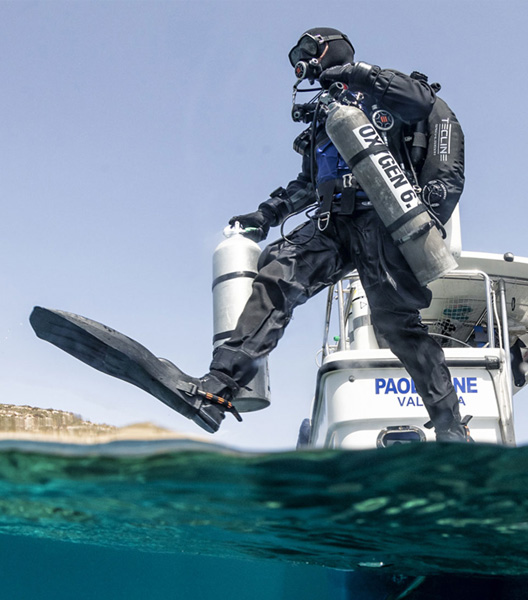
Safety precautions are emphasised during dive briefings, including specific instructions for removing equipment when using a ladder to climb back on board. Not all ladders or diving conditions are the same. For example, you may find that H-ladders require you to remove your fins, whereas T-ladders, which are much more common and user-friendly, allow you to keep your fins on.
-
Hand and finger injuries
Divers often underestimate the risk of hand and finger injuries when climbing boat ladders. These foldable ladders, which move with the swell, can be difficult to climb in rough seas. It is important to understand how they work and to avoid getting trapped between the ladder and the boat to avoid serious injury.
-
Head injury
Beware of head injuries when using a ladder in large swells, as the ladder may rise and fall into the water.
To reduce risk, carefully consider hand placement and ladder design. Avoid positioning yourself beneath the ladder, and stay aware of any undercurrents that may push you toward it. Do not surface too close to the ladder to minimize the risk of accidents.
Dive centers should conduct thorough risk assessments and prioritize ladder safety in their training and equipment protocols.
For more info:

Otitis externa, commonly known as swimmer's ear, is not caused by waterborne bacteria but by bacteria normally found in the external ear canal.
Otitis externa is a common ear infection caused by bacteria or fungi. It is more prevalent during the summer months and among individuals with certain medical conditions or those involved in water-related activities. Divers, in particular, face an increased risk when exposed to contaminated or plankton-rich waters. Symptoms include itching, inflammation, and swelling of the ear. The primary treatment for otitis externa is antibiotics.
To help prevent otitis externa, a pharmacist can prepare a solution consisting of 5% glacial acetic acid, 85% alcohol, and 10% water. Apply a few drops to each ear twice a day and let the solution sit for 5 minutes. Tilt your head and apply the solution to the other ear. It’s particularly useful to apply a few drops after swimming. Begin preventive treatment before any signs of infection appear, but avoid using the solution if there’s any sign of inflammation or a possible ruptured eardrum, as this could lead to a more severe infection requiring antibiotics.
-
Removing wax build-up
Cerumen, or earwax, can build up and block the external ear canal, reducing its ability to clean itself and increasing the risk of infection. An otoscope can be used by a trained professional to check for blockages. Over-the-counter solutions are recommended for removing earwax, but if they don't work, it's best to see a doctor. To prevent wax build-up, rinse the ear canal gently with water when showering, avoiding direct contact with the eardrum.
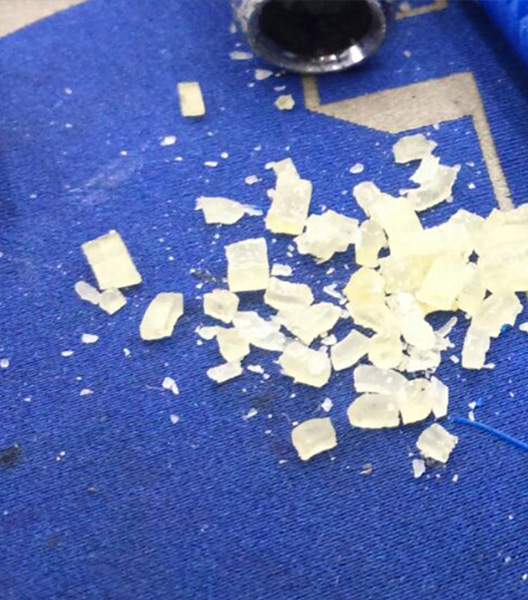
Diving accidents due to regulator failure are rare, but pose a significant risk when they do occur. One less known cause of regulator failure is crystallised material blocking the wir flow. It is recommended that hoses, especially braided ones, are replaced every five years to prevent damage. Counterfeit hoses are sometimes sold under legitimate brands. Tests have shown that low-pressure braided hoses with a polyester TPU lining disintegrate, while those with a polyether TPU lining do not fail.
Hose liner degradation is caused by a hydrolysis reaction that occurs in the presence of water, especially when exposed to elevated temperatures. Crystallisation and accumulation of 'crystals' can obstruct gas flow or migrate towards the regulator causing damage. Exposure to high temperatures and humidity accelerates the degradation process. Gearbox manufacturers are improving material testing and quality assurance. Regular inspection for external deterioration is recommended, as internal deterioration may not be visible.
-
Be aware that all regulator hoses, including braided ones, have a limited service life.
-
When buying a hose, make sure it has a polyether TPU lining, not polyester TPU. Choose reputable manufacturers with disclosed lining materials.
-
If gas flow is restricted, stop using the regulator and check both the regulator and hose.
-
Check hoses by squeezing them every centimetre to ensure consistent flexibility. Any change in resistance along the hose may indicate a potential problem, which is easier to detect in braided hoses than rubberised hoses.
Divers who witness inner-hose degradation are urged to email pictures to DAN at [email protected] to help gather information and share findings with the diving community.
For more info:

Divers love to travel and explore new dive destinations. The dive travel industry allows them to visit any place in the world. However, as we eagerly plan and pack our trips, we often neglect to consider emergency situations. What should divers consider when travelling?
Access to medical facilities in Europe is usually quick and convenient, even for specialised care. However, remote diving destinations pose challenges in terms of access to medical services and hyperbaric chambers. Organising basic services can be difficult, and facing a medical emergency can be daunting due to limited medical structures and transportation options. Emergency hotlines may not provide immediate access to care, and evacuation times can vary. Travellers to small or remote destinations should be aware of limited medical resources.
Decompression illness, or DCI, can affect divers and may require treatment in a hyperbaric chamber. However, not all dive destinations have accessible chambers, which can lead to delays in treatment. Divers should consider hyperbaric chamber treatment or immediate 100% oxygen breathing if they suspect DCI to avoid worsening symptoms.
Remote and exciting dive sites do not need be avoided. It is important to be aware of potential limitations and be prepared for emergencies. DAN Europe's Travelling Diver guide and Oxygen Provider course are helpful resources for preparing and responding to diving injuries, including recognising decompression illness (DCI).
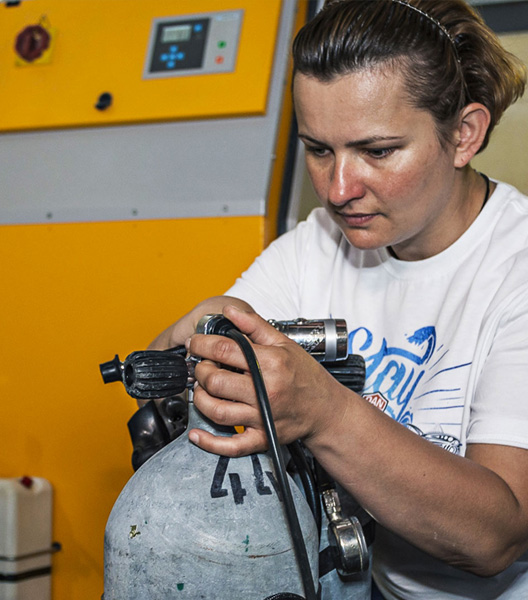
Valve connections on diving cylinders vary worldwide, leading to confusion and possible accidents. Both Valve outlet connections and Valve inlet threads van vary and the names of these threads lead to incomprehension and confusion.
The main safety issue with valve inlet threads is the insertion of an M25x2 valve into a G3/4 cylinder neck. When this happens, the first turns will feel loose, and about halfway in one will experience some resistance. Applying excessive force can damage the thread, compromising the stability of the connection. This can result in the valve blowing off during filling, causing extensive damage, serious injury and death. To add to the confusion, many divers think M25 and M26 both refer to the valve outlet connection and do not realise that M25 is an inlet threat (connection to the cylinder) and M26 an outlet connection thread (regulator connection).
It is important that only certified personnel check the threads and properly install valves on cylinders. The type of thread should be stamped on both the valve and the cylinder, although this may not always be visible. In the USA, the 3/4" NPSM connection is commonly used, which has the same safety concern.
For more info:
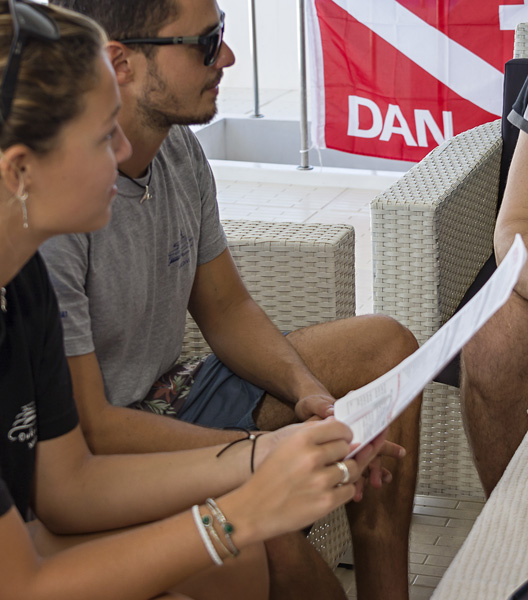
The Undersea & Hyperbaric Medical Society (UHMS) introduced the Diver Medical Participant Questionnaire in 1989 and revised it in 2020.
The questionnaire helps to identify divers who may be at significant risk when diving and who require medical assessment. It assists doctors in determining whether individuals can safely participate in diving activities. However, the effectiveness of the form depends on the honesty of the respondent. Some may withhold information to avoid being disqualified from diving. This can increase the risk of emergencies during diving and endanger other.
It is vital that divers and professionals understand the importance of the questionnaire and the potential consequences of failing to disclose important medical issues. The current version of the form can be found on the websites of diving organisations.
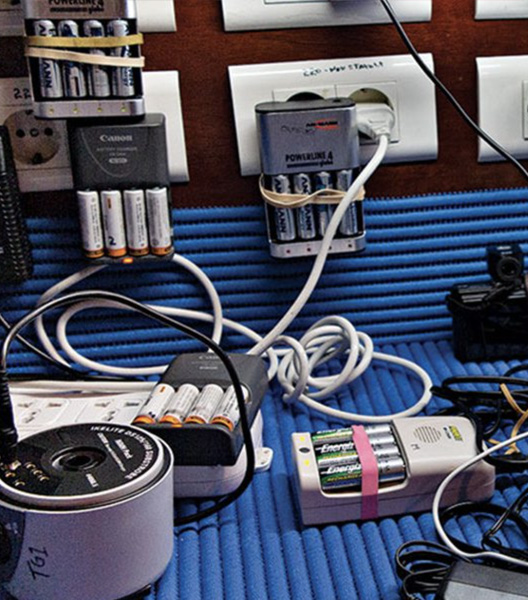
Li-ion batteries are widely used in consumer electronics and can be found in gaming systems, power tools, sports cars and mobile devices carried by over 5 billion people. They are also widely used in diving equipment to power dive computers, flashlights and cameras.
Li-ion batteries are generally safe, but there are some risks. Proper care and procedures should be followed to ensure safety and performance. Manufacturers incorporate several safety features, including venting, circuit boards, and backup thermostats/fuses. Equipment or chargers should have built-in protection. If a safety feature fails, a battery can quickly overheat and cause a fire or explosion.
-
Short circuit
Short circuiting a battery by touching its terminals can cause a tingling sensation. To avoid this, keep the battery pack away from metal objects and use covers or separate bags for each spare battery. The use of a LiPo bag can further reduce the risk of short circuits and fire. It is advisable not to use or transport a wet battery pack due to the increased risk of short circuits. -
Impact and Environment
Protecting lithium-ion batteries and devices is critical because impacts can damage the fragile separator between the positive cathode and negative anode. Accidents, heat, moisture and improper handling can cause stress and permanent damage. Follow the manufacturer's guidelines for safe operating temperatures and storage conditions. -
Charging
Li-ion batteries require careful charging to avoid overcharging. A calibrated charger is required to stop charging at peak voltage. Use a universal input charger connected to a surge protector to protect against voltage fluctuations. Avoid charging multiple devices at the same time and be careful not to overload circuits. -
Travel
When travelling, it's important that lithium ion battery packs clearly state their chemistry and watt-hour rating on the outside. Airlines may inspect and confiscate items without this information or if the batteries don't meet approved limits. It's a good idea to carry a manufacturer's PSDS for instructions in the event of a fire. -
End of Life
Li-ion battery packs have a life of 3-5 years, losing about 20% of their capacity each year. They may suddenly stop working when the voltage drops below the safety threshold. Dispose of used batteries at a battery recycling facility and never expose them to fire as this is environmentally irresponsible.
Li-ion batteries are very safe, and accidents are rare. The best approach is twofold: Try to prevent problems from happening, and know how to respond to problems if they occur. Follow the product manufacturer’s recommendations for safe handling to avoid issues, enhance performance and extend the lifetime of your battery pack.
For more info:
